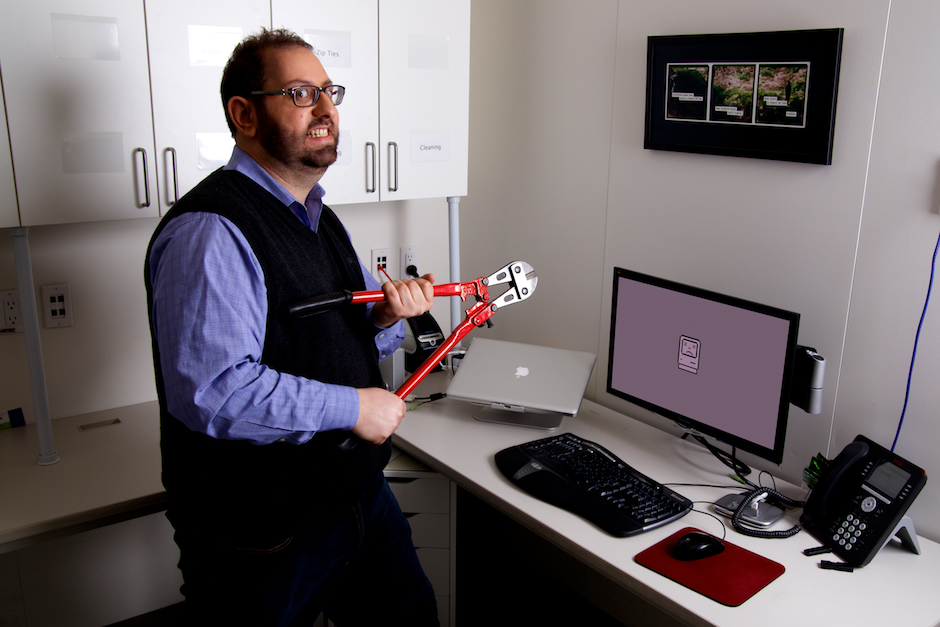
If you weren’t aware, when the month changed from June to July, I also changed jobs. I graduated from elementary school to high school. Today was the first day at my new job where I really had time to myself to do what I please. It was time to play with servers.
The school already had a Hyper-V setup, so I installed a copy of Ubuntu and hit the ground running. Once I had the IP setup and SSH enabled, I was ready to go. First thing to install was Docker.
$ wget -qO- https://get.docker.com/ | sh
With that simple command I had Docker running on the server.
For those unaware, Docker is a container system for servers. It allows you to compartmentalize services on a server without the overhead of extra operating systems, like virtualization does. In other words, when you virtualize, you could have 10 virtual servers on one physical machine, all running full copies of Windows. That’s 10 copies of Windows. That’s a lot of overhead. Docker let’s you run on one single OS, sharing resources, but compartmentalizing services.
Once I had my server setup, I had to create a Munki repository. Munki is a program that allows you to easily distribute applications.
I started by creating a data storage container to hold my Munki files. I used this to guide me, https://registry.hub.docker.com/u/macadmins/munki/
$ docker run --name munki-data -v /mnt/docker_data/munki_repo:/munki_repo busybox
Boom, I had a place to store my files, but I needed to get at the files. So I set up an SMB share. This time it takes three lines of code. I’m not inventing anything here, taking generously from here https://registry.hub.docker.com/u/nmcspadden/smb-munki/
$ docker run -d -p 445:445 --volumes-from munki-data --name smb nmcspadden/smb-munki /munki_repo
$ docker exec smb chown -R nobody:nogroup /munki_repo/
$ docker exec smb chmod -R ugo+rwx /munki_repo/
Now I can access my Munki repo through the Finder on my Mac. Now to populate the repo. To do that, I opened up AutoPKGr, pointed it to the new Munki server, and starting running some .munki recipes. There were some new programs I hadn’t used before that I needed to include. Among them were GameSalad and Sonic Pi. There weren’t AutoPKG recipes for them, so I dove in, and now they’re available to the whole community. There’s still a couple titles I need to create recipes for, but I’ll get to that tomorrow.
Next was activating the web server. Munki is just files on a web server. Using Docker to create an Nginx instance shouldn’t be hard, and it’s already been done for Munki. So all I had to was type in:
$ docker run --name munki --rm -p 80:80 --volumes-from munki-data macadmins/munki
Easy peasy, right?
Wrong.
$ sudo defaults write /Library/Preferences/ManagedInstalls SoftwareRepoURL "http://FQDN/munki_repo"
I, of course, replaced FQDN with the fully qualified domain name. It wasn’t working. Running managedsoftwareupdate on the computer was returning a 404 error. It wasn’t hitting the server properly. What did I do wrong?
After a bit of help from the author of the docker file, I discovered that it’s pointed to http://FQDN/repo, not /munki_repo. D’OH! I could have gone here and seen on the original file that repo is pointing to munki_repo.
But it’s up and running. I could now use Munki to have to client upgraded to OS X 10.10.4, so I can test Yosemite (or Yo, Semite!) in this environment. And that worked like a charm.
That was all I was supposed to do that day, but it was still early. Why not tackle one more job? Let’s set up MunkiReport-PHP!
MR-PHP is a program which lets the client computers report in and give the admin useful data about the state of the fleet. Fantastic! It’s also been Dockerized, so it should be easy. I found it on DockerHub, and I was ready to go…
As you can see from above, my Munki repo is sitting at /mnt/docker_data/munki_repo, so it made sense to put the config file for MR-PHP at /mnt/docker_data/munkireport.
$ sudo mkdir /mnt/docker_data/munkireport
$ cd /mnt/docker_data/munkireport
I needed the config file there.
$ sudo curl -O https://raw.githubusercontent.com/munkireport/munkireport-php/master/config_default.php
$ sudo cp config_default.php config.php
That downloaded the file and copied it, so I had a factory default if needed. I then ran the docker container.
$ docker run -d -v /data/munkireport -v /mnt/docker_data/munkireport/config.php:/app/config.php -p 80:80 macadmins/munkireport-php
Except the ports of 80:80 won’t work! EEK! 80 is in use by Munki. So I ran…
$ docker run -d -v /data/munkireport -v /mnt/docker_data/munkireport/config.php:/app/config.php -p 5000:80 macadmins/munkireport-php
So now I could go to http://FQDN:5000 and generate a password, which I would then throw into the config.php file, along with any other changes I might need to make. Hoorah!
And that’s it, easy peasy lemon squeezy.
Tomorrow I test Yo, Semite!
